Andrew Skurka's Blog, page 29
April 8, 2019
Book review: The Sun is a Compass || Bellingham to Kotzebue, Alaska

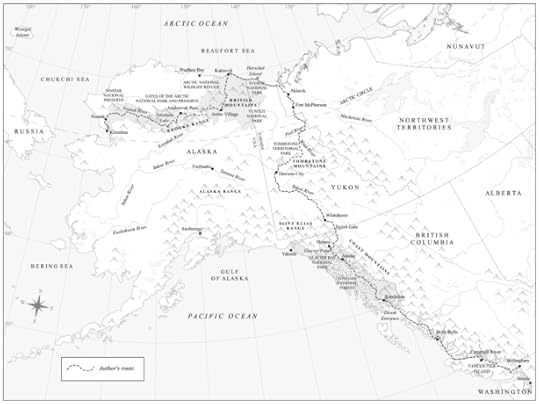
This route looks like it could be adventurous
Nine years ago I randomly met Caroline Van Hemert on a gravely beach along Alaska’s Lynn Canal, between Juneau and Haines. She approached as I was cooking dinner and soaking in a splendid sunny evening. It was kind of dreamy, I won’t lie — I was halfway into my Alaska-Yukon Expedition, and she was the most attractive female I’d seen since leaving Boulder, Colo., three months earlier.
That night I stayed on her property, where her master carpenter husband Pat (shucks) had built a beautiful cabin. The floor of his workshop was less comfortable than the beds of moss to which I was accustomed, but I appreciated its roof and bear-proof walls.

Lingering pack ice along Arctic Coast near Herschel Island
Two years later, Caroline and Pat embarked on their own epic expedition through Canada and Alaska. But, unlike mine, a detailed account of it is retold in, The Sun is a Compass: A 4,000-mile journey into the Alaskan wilds, which Caroline released last month with publisher Little, Brown Spark, part of the Hachette Book Group.
The Sun is a Compass is well written, personal, and frequently harrowing. It’s not a day-by-day diary, which tend to be tedious and to lack introspection. Instead, it’s almost as if Caroline answered FAQ for 150 pages — “Why did you do this? How did you and Pat meet? What did your family think of your plans? What was the scariest part? What’s Section 1002 really like? How many bears did you encounter? What was the largest caribou herd that you saw? What it like to not eat for four days? Did you ever think of quitting, or think you might be unable to finish? Did you decide to have children afterwards? Then, she added plot for another 100 pages so that the story is coherent and chronological, not disjointed.
This “snapshot” approach reminds me of, A Long Walk Home: 4,000 miles by boat, raft and ski, by Erin McKittrick. That’s another remarkable couple, another mind-blowing adventure, and another highly recommended read.

Towering granite spires in the Arrigetch Peaks, Brooks Range
If you’re into birds, you’ll especially love this tale — just before starting this adventure, Caroline earned her PhD in ornithology, and the text frequently discusses the subject.
Caroline and Pat now split their time between Haines and Anchorage, and are raising two young boys. It’s another example of a mega Alakan expedition that was the end of an era, not the beginning. Those adventures are hard to top.
Disclosure. This website is supported by affiliate marketing, whereby for referral traffic I receive a small commission from select vendors, at no cost to the reader. This post contains affiliate links. I have no other financial interests in any brands or products.
The post Book review: The Sun is a Compass || Bellingham to Kotzebue, Alaska appeared first on Andrew Skurka.
April 3, 2019
For sale: My childhood home

Thirty-three years ago my parents moved to 51 Donald Lewis Drive in Seekonk, Mass. — along with their three kids, ages 7, 5, and 2 — and on Monday put this classic Colonial on the market. With this post I’m not trying to help their sale, but simply mark a milestone as I occasionally do here. Plus, maybe it’ll be a refreshing break from the “Best backpacking water bottles of 2019”-type content that is annoyingly superficial and seems increasingly common.
I’m glad my parents — who are now nearly 70 years-old — are making this move. They’ve always been realistic about their mortality, and they’ve never delayed tough decisions and conversations. For a few more years I’m sure they could still maintain a single-family home, use the stairs to the second floor and basement, and drive 60-90 minutes up I-93 to visit my sisters and their families north of Boston.
But as I’ve witnessed with my elderly neighbors next door, it’s best to move when you easily can, not when you obviously must. A year ago Dan was riding his bike to the grocery store and doing yoga three times a week. But in October he fell and broke his shoulder, and has fallen twice since, smashing through a glass coffee table and busting his nose on a door. They can’t get to Windcrest — a senior living facility south of Denver — fast enough, and the heavy lifting has fallen mostly on Abby.

First day of school, 1986. My older sister Kerri and younger sister Christine on the right. I’m in the green jacket with my arm around best friend Paul, and my neighbor Jeff is behind us.
My career may have started earlier if I’d grown up in Boulder or Bozeman or Bend, but Seekonk served me well. It was safe and family-oriented, offered easy access to Providence and the Newport beaches, and had enough swamps and powerline easements to scratch the adventure itch of a teenager. Its school district was middle-of-the-pack in Massachusetts. I like I was given enough resources and opportunities to compete with students from more privileged towns, but still learned to work hard and be scrappy like students from poorer districts.
Exorbitant real estate prices and poorly maintained properties (and often both) are the norm in Boulder, and seeing this 2,500-square foot property on a half-acre lot for just $489,000 makes me question the sustainability of living in The Republic.
By my perspective today the house was tight for five, but at least we all had our own bedrooms. It will feel less cramped for the next family — once my parents finished paying college tuition, they added a shower to the downstairs half-bath, built a gorgeous sun-room above the backyard patio, and removed the wall between the kitchen and dining room. Sweltering summer nights are now bearable thanks to the new A/C ducts. The basement was partially finished in the 1990’s, but would benefit from updating and another bathroom.

Amanda and dad with mom’s homemade cinnamon rolls on Christmas morning, 2012
In the huge backyard we had a swing set and garden, and played catch and soccer. Soaring hardwoods are common in the neighborhood, but they struggled to take root back there. Our black lab Sport stripped the bark off a red maple shortly after it was planted, to express her displeasure about being tied up. And the 18-inch oak sapling that we transplanted from my grandfather’s house after he passed away grew to 25 feet before being blown over in a storm.
At the end of the street are still the public athletic fields, which the town has continually improved and which is now a first-rate manicured complex. In 1986 there were only two baseball diamonds, neither with an outfield fence or dugouts. The sole tennis court was unusable. And where there are now irrigated soccer fields was a dairy farm that had been reclaimed by the forest. The wild space made for an adventurous “shortcut” to Martin Elementary, in an era when parents still permitted their children to do such things.
I don’t know the composition of the neighborhood now, but there were eight young families on the original Donald Lewis and “the new road” that was tacked on in the late-1980’s. We built bike ramps out of plywood and bike courses over dirt mounds in vacant lots, raced on our Rollerblades and skateboards, caught turtles and tadpoles in a nearby pond, and had legendary games of Manhunt in the summer.
My parents’ new pad in Andover in a 62+ community will suit them well. Everything important is on the main floor; yard maintenance and snow removal is included; and my sisters and aunt are 10 to 25 minutes away. My dad is notoriously resistant to change — I think he still wears pleated pants, and I know he’s been wearing the same Johnston & Murphy dress shoes for several decades now — and finding a new home (and, by extension, settling on a new lifestyle) was a challenging process.
Amanda and I know it will be difficult for my parents to leave Seekonk and their memory-filled home, but we’re really happy for them and are excited about the next chapter in their lives.
The post For sale: My childhood home appeared first on Andrew Skurka.
March 28, 2019
Snowpocalypse 2019: Expected “summer” conditions in the High Sierra & southern Rockies
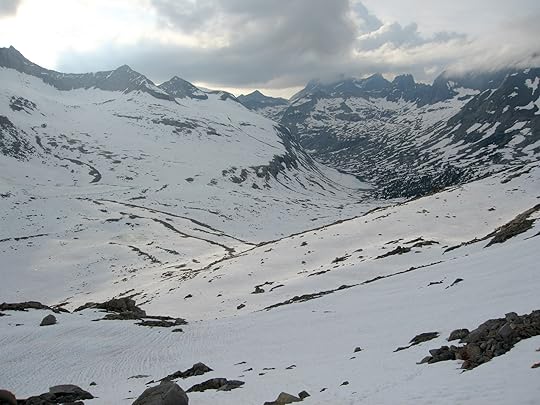
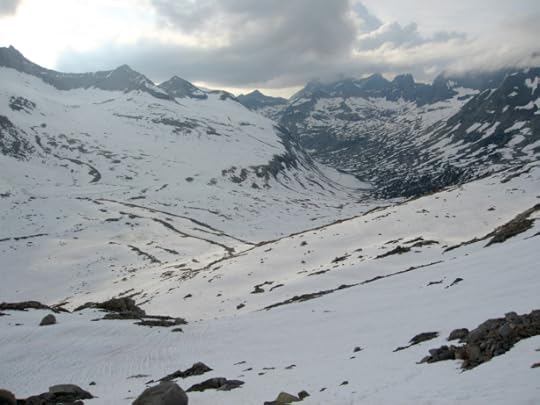
Extensive snow coverage on the north side of Mather Pass, looking towards Palisade Lakes, after a very wet winter. Taken June 28, 2006.
California, Oregon, Nevada, and the Four Corners states have been drenched this winter, with snowpacks now about 150 percent of their normals. If you have scheduled backpacking trips in the High Sierra or southern Rockies in June or July, and to a lesser degree August, here is some reading for you:
1. Today on my Outside blog I just published a new article, “What Epic Snowpack Means for Summer 2019 in the West.” It details the snowpack, predicts likely conditions, and describes critical gear and skills.
2. When PCT and JMT hikers were losing their $hit in spring 2017, when the snowpack was negligibly greater than it is this year, I posted a six-part tutorial on backpacking in early-season conditions. I have not updated it since, but I’ve read it through and it’s just as relevant today as it was two years ago.
I’ve also started a public map, High Sierra Creek Hazards, that pinpoints known problem spots and potential workarounds. I’m thinking that I’ll pair this with a public datasheet (i.e. spreadsheet) and make both available for public download. To start, I think it makes sense to focus on the PCT/JMT, but I’d like to expand it to the high routes and to no-routes as well.
The post Snowpocalypse 2019: Expected “summer” conditions in the High Sierra & southern Rockies appeared first on Andrew Skurka.
March 25, 2019
Eight podcasts about backpacking, running, climbing, and hunting
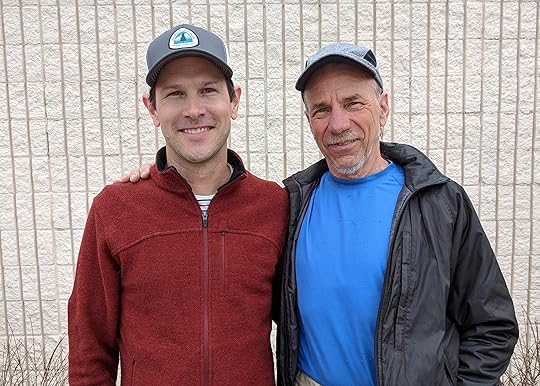

With host Buzz Burrell after my interview for the Fastest Known Podcast
This winter I’ve been a guest on six podcasts, and will soon appear on two more. It wasn’t intentional — whether by coincidence or due to an increasing number of outdoor podcasts, I received an exceptional number of interview requests, and I always say yes.
Most readers will probably be familiar enough with my own story and opinions to skip the episodes featuring me, or at least most of them. But if you’re looking for interesting and entertaining conversations while commuting, working out, or performing mindless tasks, here are some options (in no particular order):
1. Fastest Known Podcast
Fastest known times (FKT’s) have become increasingly popular and respected, and FastestKnownTime.com — started by Peter Bakwin and Buzz Burrell — is the definitive source for all things FKT. The podcast series was launched six months ago and has an impressive guest list, including Kilian, Stringbean, Anton, Walmsley, and more.
I’m in Episode 26. All other episodes are available here.
2. Backpacker Radio
After thru-hiking the Appalachian Trail, Zach Davis wrote Appalachian Trials and started a website by the same name, which he recently re-branded as The Trek to reflect its expanding focus. Backpacker Radio is The Trek’s flagship podcast.
My interview with Zach and Smiles has not yet aired. The first thirty-two episodes are here.
3. Inside the Outside
Gary and Christy Kirk are just finding their voice with Inside the Outside.
My episode just aired, but personally I’m more interested in the interview with Derek Hansen.
4. Beyond the Kill
The Journal of Mountain Hunting produces content with very high production value. For example, watch “Toeing the Line,” about late-season goat hunting in British Columbia, brr. Thanks to a business model that is independent of affiliate revenue, its videos, podcasts, and blog posts generally focus on destination hunts, hunters, and skills, instead of gear.
I was interviewed in Episode 126, but don’t feel like the conversation fulfilled its potential.
5. The Adventure Sports Podcast
Denver-based CampCrate has a prolific podcast series. I was Episode 490, and six additional installments have already been released in the intervening fifteen days.
6. Sender’s Game Podcast
Fritz, who has thru-hiking roots but is primarily a climber, occasionally interviews a non-climber for Sender’s Game, which is now seventeen episodes deep. My episode just went live.
7. The Trail Show
It’s been four years since I was last on The Trail Show, which must be one of the longest running and most popular hiking podcasts. In May we’ll be recording from my living room, presumably about the Yosemite High Route and the beers they’ve recently been sent. If we’re lucky, Oden will make a guest appearance.
8. Right to Roam
This Wyoming-based podcast focuses mostly on conservation and land use, from the perspective of hunters and biologists. The commentary is measured and fact-based.
We’re still sorting out a date for an interview. All episodes are available here. I’d recommend Episode 53 on African trophy hunting, as well as Episode 55 with Ursack (which is a rare gear/brand interview).
The post Eight podcasts about backpacking, running, climbing, and hunting appeared first on Andrew Skurka.
March 13, 2019
Backpacking Gear List Template + 3-season Checklist


A backpacking gear list template + checklist, with sample selections (green columns) as an example.
Completing a gear list is one of the most important and most beneficial steps in preparing for a backpacking trip. A fully featured gear list can be used to:
Pack virtually (and avoid a gear explosion in the guest room),
Organize systems (e.g. clothing, shelter, kitchen),
Calculate pack weight,
Budget and track new purchases,
Prepare trips in the future, and
Check immediately pre-trip that all items are packed.
As part of the Planning Curriculum for my guided trips, every client is required to complete a gear list. To assist them in this process, I provide them with a gear list template, the same that is included below. Since 2011 this template has been shared with 80 trips and nearly 500 clients; it’s updated and refined annually. Unlike most other gear lists, this template is applicable to:
Spring, summer, and fall conditions;
All backpacking locations in North America (and, by extension, most of the world);
All trip lengths;
Men and women, young and old;
All ability levels; and,
Most backpacking styles.
In addition to making it universally applicable, I’ve also tried hard to make it instructive by including comments, examples, and links to more information.
Backpacking Gear List Template & Checklist
View the Template + Checklist in a larger window.
Download & edit the template
If you simply need a backpacking checklist, download the template as a PDF.
To use this spreadsheet as a template for your own gear list, you must make your own copy:
In a new tab or window, open the file Backpacking Gear List Template & Checklist.
If you do not have a Google account or if you prefer other software besides Google Docs, under “File” select “Download as” to generate your own Excel or CSV file. Otherwise,
Log in with your Google account, if you are not already.
Under “File” select “Make a copy.” Find your own copy of the file in Google Drive.
Instructions after download
Erase sample cells
In cells F3:P11, I included sample information to demonstrate how the template should be used. Erase these cells and fill them back in with your own selections.
I suppose you could erase cells B1:E140, too, but I think most users will find them to be a useful reference. You can also hide these columns to get them out of the way.
Think twice before adding rows
This template has been extensively vetted, and it should have space already for any reasonable selection. If a product category is missing, I probably deemed it unnecessary or redundant, even under rare circumstances. That said, if you believe that a worthy product category was omitted, add one in your own version; please leave me a comment below, too — I’m open to additional edits.
If rows are rearranged, the weight calculators must be redone
With basic spreadsheet know-how, this is straightforward. If the SUM function means nothing to you, however, my recommendation is to leave the template organized as-is.
IMPORTANT: Don’t pack everything on the list!
Gear selection should be dictated by:
Your backpacking style, i.e. ratio of hiking versus camping; and,
When, where, and for how long you are going, i.e. environmental and route conditions.
So that this template is broadly applicable, it includes many items that would be optional or completely unnecessary for your specific trip — but critical for others. For example, for a summertime Appalachian Trail section-hike, you don’t need insulated pants or an ice axe, but you may want both for a John Muir Trail thru-hike in June.
To determine the relevance of each product category, research the likely conditions, review trip-specific gear lists, and seek commentary on your selections.
Column Definitions
Pre-filled Columns
Item | A broad product category
Ranking | My assessment of an item’s general importance, as measured mostly by the safety and comfort that it provides.
Critical = A must-have, no exceptions
Suggested = A valuable addition, few reasons not to bring
Optional = Not critical, but worth consideration
Depends = Contingent on trip objectives, conditions, and/or other selections
Unnecessary = Unlikely to need and/or can be improvised
Description or Purpose | An explanation of its role or its usual specifications
Example | A real product that typifies the product category
More Info | Links to related reading and viewing on my website
Blank Columns
Rank | Your determination of the importance of a product type
Selection | The exact item that you have selected
Weight | A postal scale is an excellent investment for any backpacker
Pre-Hike Comments | Justify your selection, include key product specs, express your concerns, etc.
Certain? | Have you made a final decision, or are you still on the fence?
Alternate | Your secondary or backup option
Weighed? | Manufacturer specs are unreliable, especially if products are made in different sizes
In-hand? | Do you own this item already? Is it on order? Or do you need to buy, rent, or borrow it?
Packed? | When doing your final pack-up, use this column as a checklist to ensure that you have everything you need.
Other Notes | For information for which there is no dedicated space
How can I make this template + checklist more useful for you? Share your ideas, and tell me what you think of it.
Disclosure. This website is supported by affiliate marketing, whereby for referral traffic I receive a small commission from select vendors, at no cost to the reader. This post contains affiliate links. I have no other financial interests in any brands or products.
The post Backpacking Gear List Template + 3-season Checklist appeared first on Andrew Skurka.
February 28, 2019
Almost done (and now available): Yosemite High Route Guide

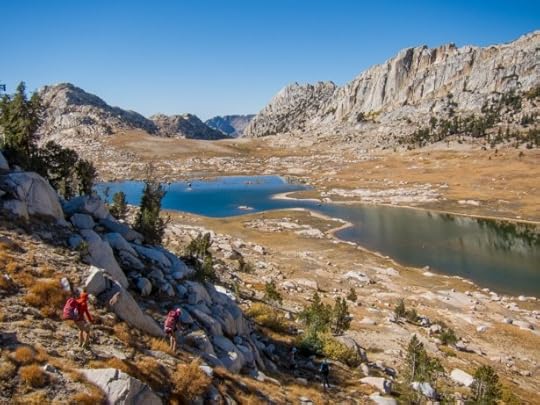
Rock Island Lake, a rarely visited alpine basin
I had self-imposed a deadline of March 1 for publishing the Yosemite High Route Guide, knowing that backpackers are making their summertime plans (and in some cases have already made them).
The Guide is not yet complete — it’s about 85 percent of the way there — but today I’m releasing it anyway so that it can be put to use, especially its planning resources. The Yosemite High Route Guide is available for immediate download.
After I complete the remaining 15 percent sometime this month, I will send to all customers a new download link for the missing files or for the fully completed Guide (especially if I end up tweaking anything in the “finished” 85 percent portion). Expect another update in Fall 2019 based on guided trips on the route this July.
The current edition, which I’ve designated 1.0, includes the following materials:
“Guidebook — Part 1: Before you go” includes essential preparatory information (e.g. permits, travel, regulations, scheduling) that is supplementary to the existing online information;
Annotated topographic maps for the Core Route, all twelve Approach Routes, and eight recommended Section-Hikes;
Datasheets for the Core Route, all twelve Approach Routes, five Alternate Routes, six featured Thru-Hikes, and eight recommended Section-Hikes; and a,
Rudimentary GPX file to help find trailheads and download maps for off-line use.
The current edition does NOT yet include Part 2 and Part 3 of the Guidebook, which will have route descriptions for the Core Route, Approach Routes, Alternates, and Section-Hikes. I’m working on these documents now, but they’re not ready for prime-time. Thankfully, they’re not necessary in planning a thru- or section-hike of the Yosemite High Route.
Samples of these resources can be found here.
I’m frustrated that I’m not yet done with the Guide — I don’t like missing deadlines, and just as much I’d like to move on to other projects. But I’m satisfied with the current quality of the materials, and I’d rather that Part 2 and Part 3 of the Guidebook be late but good (instead of on-time but shoddy).
Partly responsible for the delay are the multiple revisions that I made to the route’s fundamental structure. Ultimately, I identified a 94-mile Core Route that is consistently world-class: it’s 70 percent off-trail, gyrates 630 vertical feet per mile, and accesses rarely visited pockets of America’s third National Park.
To reach this Core Route, I’ve offered twelve Approach Routes: eight for the northern terminus, ranging from 17 to 50 miles; and, four for the southern terminus, ranging from 10 to 18 miles. All told, there are thirty-two potential thru-hiking itineraries, making it possible that no thru-hikers in 2019 will do the same route.
The post Almost done (and now available): Yosemite High Route Guide appeared first on Andrew Skurka.
February 20, 2019
Help wanted: Guided trips, content, marketing


Requirement: You must be more productive than this guy.
My business has become sufficiently large and reliable that I’d like some assistance in running it, especially the guided trip program. In its current one-man configuration, I’m too stretched by the workload and — more consequentially — too distracted by critical but routine tasks that are preventing me from working on higher-value projects.
Ideally, I’d like to find one Boulder, Colo. local who has all the requisite skills. But in reality, I’m expecting to hire multiple individuals — at least one in Boulder, but maybe remote for the others — who collectively get the job done. I prefer candidates who can make a multi-year commitment, so that the time invested in training them really pays off. Some of these roles could also grow, especially if you are a self-starter and entrepreneurial.
The work is part-time, seasonal, inconsistent, and generally entry-level. It’s best for someone who has (or does not need) a reliable source of income, and who wants to pick up a few extra hours, especially in an industry that’s both personally interesting and hard to break into.
Within some guidelines, the work can be completed from home and on your own time. My busy season is December through September, although demands on each position fluctuate.
Project 1: Guided trips
My program has steadily grown since it launched in 2011. This year I’m offering 20 sessions in four locations, and with space for 176 clients.
Role 1: Planning curriculum and follow-up
The Planning Curriculum is a 9-part program to prepare clients for their trip with us. Most modules (e.g. on gear and food) have already been developed, but the materials need to updated for 2019 trips and to be shared with clients on a specific schedule. Most modules will generate Q&A.
This year I also need help in developing new modules on training, GPS smartphone apps, and skills; and a pre-trip virtual meetup must be organized. You will be responsible for managing client access to Google Groups and Google Drive, and assisting clients with associated technical questions.
After each trip, I like to share photos and a route map, and to conduct a performance survey.
I could eventually see the Planning Curriculum as an online course.
This role requires reliability, attention to detail, writing skills, and a solid backpacking background.
Role 2: Gear shakedown-er
As part of the Planning Curriculum, clients must complete a gear list. We give them a template, they fill it out, and we review it by flagging problems and suggesting improvements.
This could be a standalone project. It warrants enough time on its own (and it’s all concentrated in a two-week period), and it requires a more specific skill set than the previous position. In addition to reviewing gear lists, you will have to engage directly with some clients who seem to need more help, like if their gear list is incomplete or not started.
To conduct a proper shakedown, you must have extensive knowledge of backpacking gear (i.e. including performance characteristics and optimal applications for specific products and general designs, materials, and fabrics) and you must be able to critique kits for hiking-intensive trips in West Virginia in May, Alaska in June, the High Sierra in July, and Colorado in September.
Role 3: Trip preparation and breakdown
This year I will prepare for the equivalent of an 816-day solo backpacking trip. Needless to say, this will entail an exceptional amount of manual work, and it must be done in Boulder, Colo.: purchasing food, gathering loaner/demo gear, updating settings on inReach units, assembling first aid and foot care kits, and printing forms, maps, menus, rosters, and other documents we need in the field.
After trips return, everything must be cleaned and put away.
Project 2 (Role 4): Content
First, my route guides need editing and updating.
Second, I’m interested in expanding the content on my blog with posts written by others. I will start by working directly with competent writers. If this initiative is successful, I would need an editor to manage writers, build relationships with brands, and prepare all posts for publishing.
For this position, I need to see excellent writing skills and an extensive backpacking history.
Project 3 (Role 5): Marketing
This individual will be tasked with increasing website traffic and guided trip applications, mostly by improving the regularity and quality of posts on social platforms, and by better utilizing my e-newsletter list. Some targeted paid advertising will also be considered.
Proven marketing savvy would be helpful here, but I’ve set a low bar in this area and most recreational users of Instagram and Facebook could do better.
Compensation
Most roles will be paid hourly and as independent contractors. A per-post or per-word count model might be better for Role 4.
The compensation will be commensurate with skills and experience.
To apply
Contact me to apply. Specify the roles in which you are interested, and list relevant skills, work experience, and backpacking experience. You might include a resume, writing samples, links to your shakedowns on r/UL and/or social feeds that you manage, and any other compelling materials.
Role 1 and Role 2 are most urgent, and I will starting interviewing immediately. Role 3 will start in April. Roles 4 and 5 are less urgent, and probably also application-dependent.
Questions about these positions? Leave a comment.
Andrew Skurka Adventures LLC is an equal opportunity employer.
The post Help wanted: Guided trips, content, marketing appeared first on Andrew Skurka.
February 15, 2019
Ron Bell of MLD to help guide Fundamentals courses in West Virginia
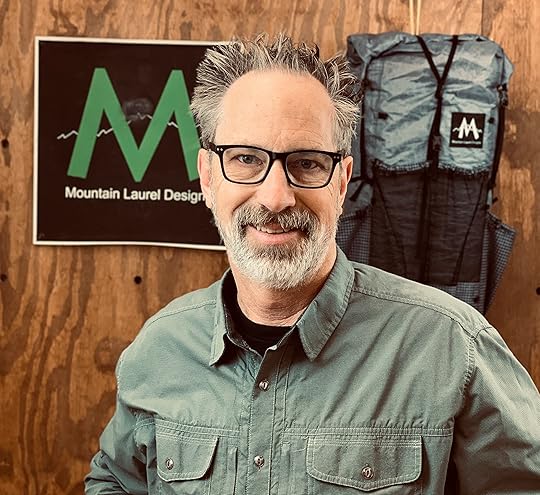
Ron Bell, the founder and owner of Mountain Laurel Designs, one of the most innovative and influential ultralight backpacking gear companies, will be joining Alan Dixon, Joe McConaughy, and me as a special guest on the Backpacking Fundamentals course in West Virginia, May 10-12, 2019.
Ron last joined us in 2012, and I’m excited to have him back. He has exceptional understanding of gear design, manufacturing, fabrics, materials, and trends. His insights on shelters, sleeping bags, and backpacks should be fascinating. Ron is also great company, and is deeply embedded in the backpacking community.

Ron Bell overlooking the Shenandoah Valley
Unlike most of my other guided trips, there are still some spots open in West Virginia. View availability here, and apply here.
I’m still sorting out the fourth guide for the May 13-15 session. My leading applicant is a DC-based alumni with a PhD in environmental sciences, with a specific focus on the ecology and geology of the Appalachians, who has also thru-hiked the Sierra High Route, Wind River High Route, and the Rocky Mountain section of the Pfiffner Traverse. TBA.
The post Ron Bell of MLD to help guide Fundamentals courses in West Virginia appeared first on Andrew Skurka.
February 6, 2019
Preview: Salomon S/Lab Ultra 2 || Lighter & stickier than predecessor

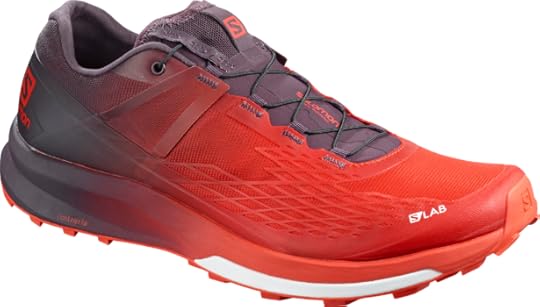
The Salomon S/Lab Ultra 2
The Salomon S/Lab Ultra 2 will be available soon, in April 2019. This third-generation model remains purpose-built for long trail races and training runs, and the iterative changes seem entirely likable.
Like most Salomon models, the Ultra is a neutral shoe that is designed for narrow and low-volume feet. But it has more forefoot volume and underfoot protection than the Salomon Sense line, making it a better choice for ultra-length outings. I used the second-generation S/Lab Ultra (my preview) last year for Run Rabbit Run 100, and the first-generation S/Lab Sense Ultra (my review) for UTMB and Bighorn 100.
The Ultra 2 is essentially an updated Ultra 1. It shares the same:
Foot last and interior volume
Heel cup shape and construction
Midsole composition, including resilient PU insert
Hydrophobic PU exoskeleton
Elasticized tongue
4mm outsole lug pattern
Stack height (26 mm/18 mm) and drop (8 mm)
Colorway
It’s been tweaked in four ways:
The “lower” pair of wings were eliminated.
The “upper” pair of wings were redesigned. They’re made of lighter material, and they pivot higher on the shoe.
Stickier rubber compound, supposedly with no loss of durability.
The upper mesh is lighter and thinner. It’s hard to see in photos, but more obvious in person.
These changes dropped the weight of the shoe slightly. The Ultra 2 specs at 9.9 (280 g) oz for men’s size 9, versus 10.6 oz (300 g) for the Ultra 1.
I’m told that I’m on the list for media samples, and hopefully I can follow up with a review by April.

The Salomon S/Lab Ultra 2
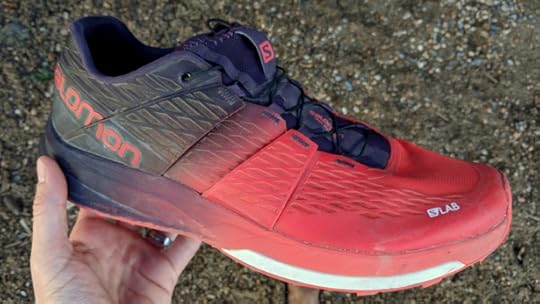
For comparison, the S-Lab Ultra 1. Notice its two pairs of wings, and how the “upper” pair pivots from the upper/midsole junction.
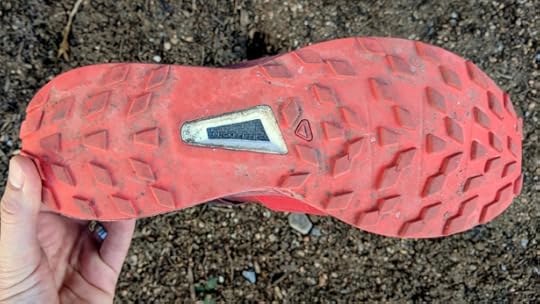
The Ultra 2 will retain the same outsole lug pattern and height, but the compound will be slightly sticker, supposedly without any loss of durability.
Disclosure. This website is supported by affiliate marketing, whereby for referral traffic I receive a small commission from select vendors, at no cost to the reader. This post contains affiliate links. I have no other financial interests in any brands or products.
The post Preview: Salomon S/Lab Ultra 2 || Lighter & stickier than predecessor appeared first on Andrew Skurka.
January 17, 2019
Last call: Open application period closes Sunday for guided trips
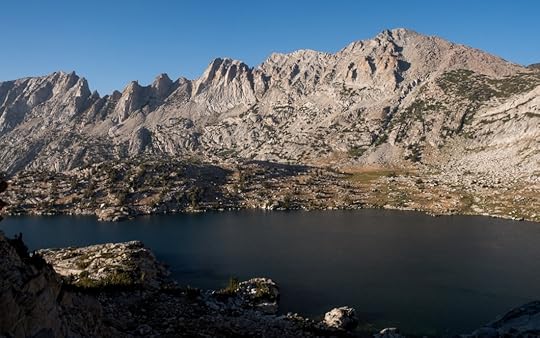

Upper McCabe Lake and the Shepherd Crest
This Sunday the open application period for my 2019 guided trips will close. Applications received through Sunday, January 20, will be considered equally; thereafter, they will be considered on a first-come, first-served basis for the spots leftover.
If you are interested in a 2019 guided trip, I strongly recommend that you apply now. With the applications received so far, I expect that most of the sessions will be completely full and will have a waitlist, including all the sessions in Alaska, the 5- and 7-day trips in California, and most of the 5-day trips in Colorado. If there are spots left, they are most likely to be on the 3-day Fundamentals courses. Spots will open up later in the season due to cancellations, but they’re unpredictable and not necessarily for your ideal trip.
It’s been another very strong launch for these guided trips. I’m really pleased with both the number and quality of applications.
The post Last call: Open application period closes Sunday for guided trips appeared first on Andrew Skurka.




